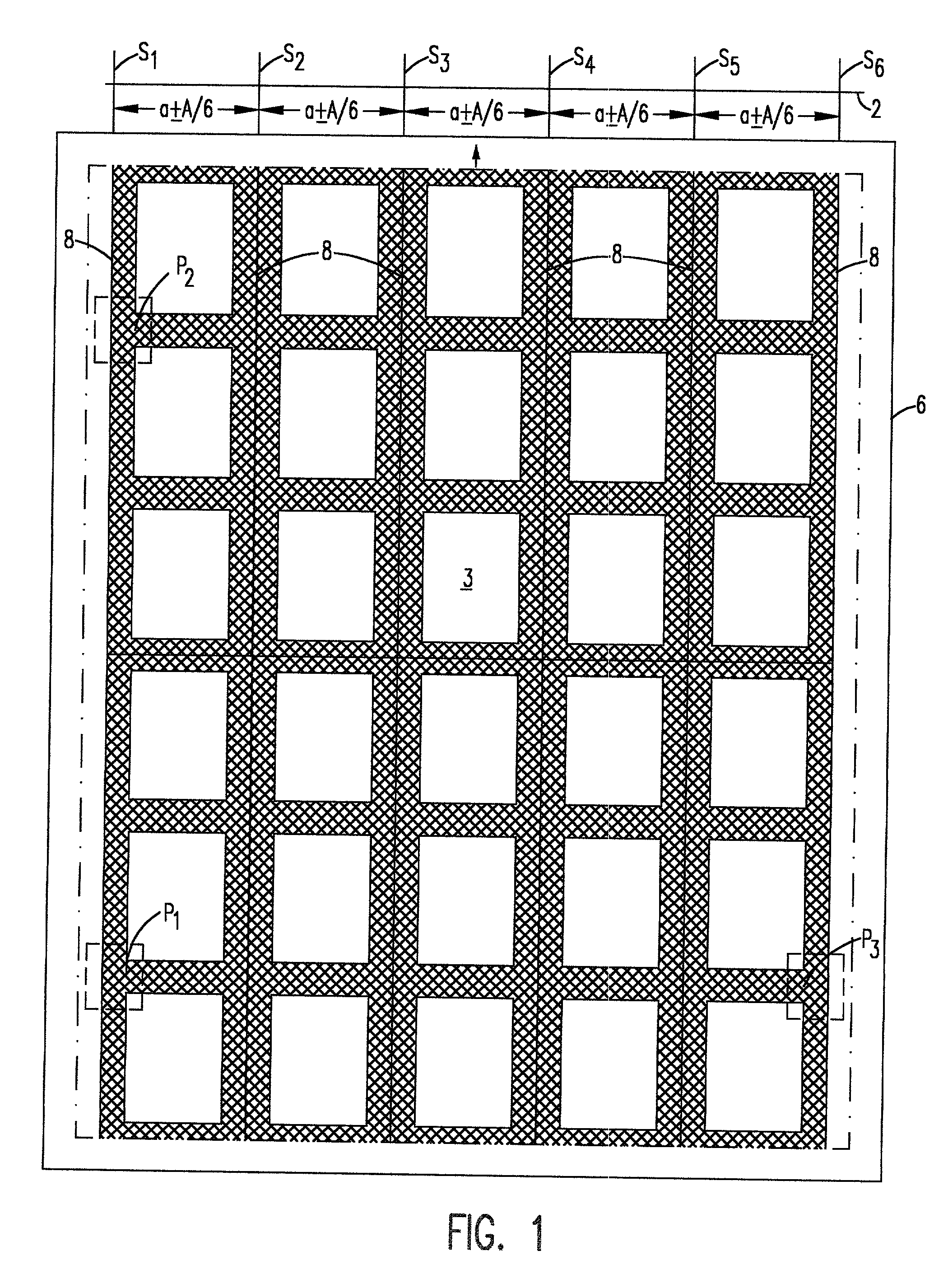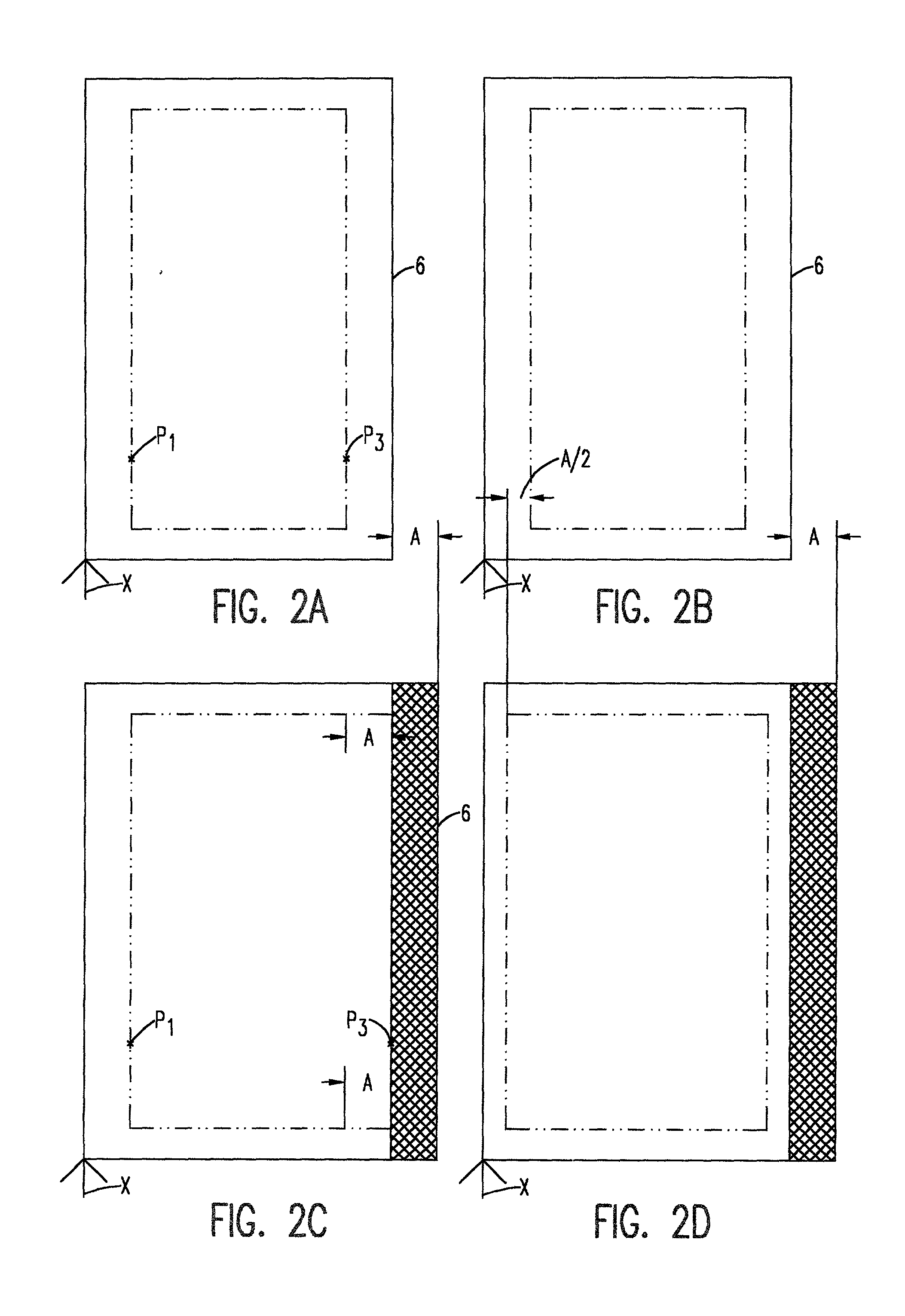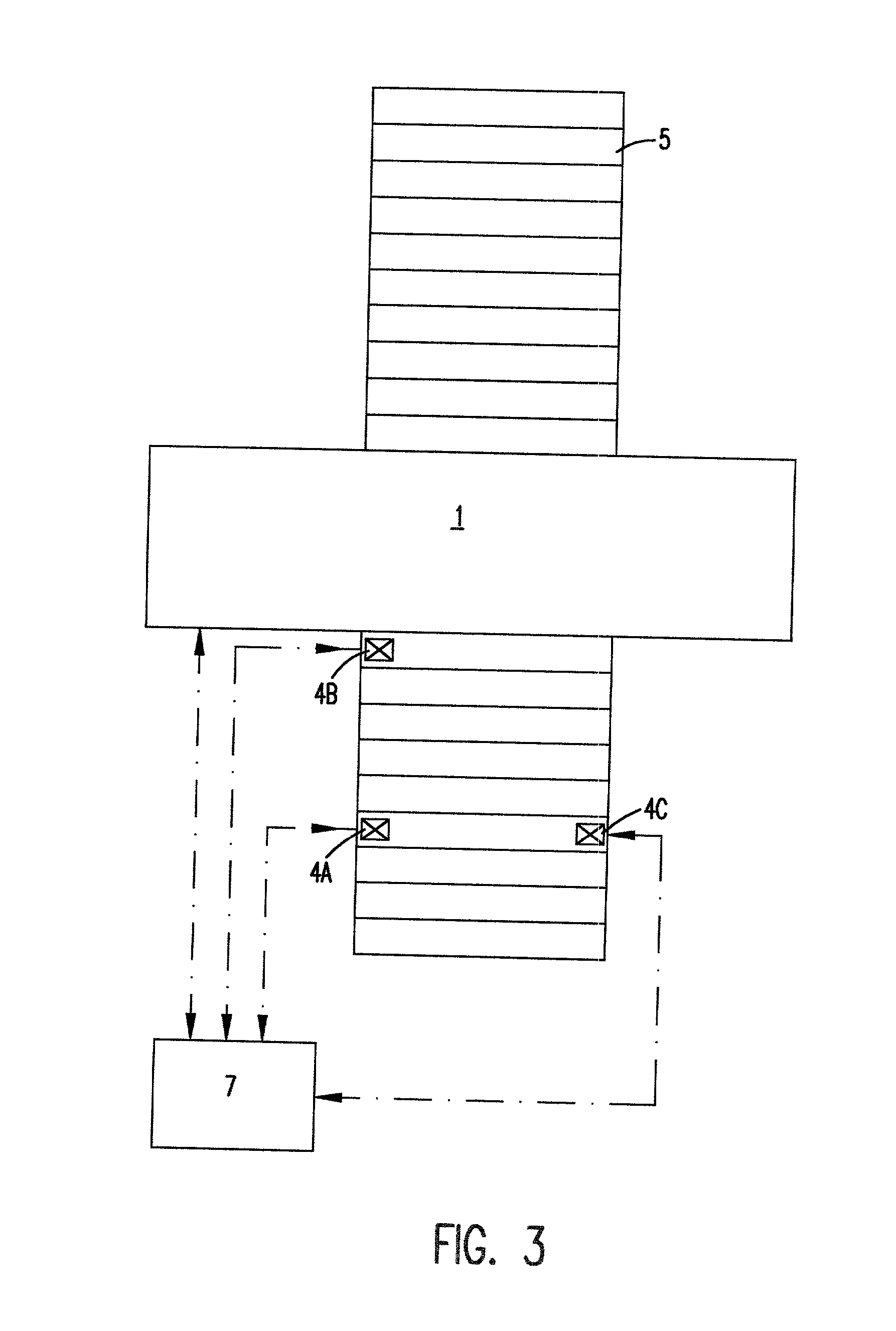Process for cutting out panels or the like
- Summary
- Abstract
- Description
- Claims
- Application Information
AI Technical Summary
Benefits of technology
Problems solved by technology
Method used
Image
Examples
Embodiment Construction
[0027] FIG. 3 shows a board-dividing apparatus that is provided with a roller path 5, onto which the wood fiber panel 6 furnished with a decorative layer 3 can be laid. The board-dividing apparatus is provided with a saw 1 that consists of a plurality of saw blades S.sub.1, S.sub.2, S.sub.3, S.sub.4, S.sub.5, S.sub.6, that are positioned in parallel fashion. The saw blades S.sub.n are spaced at a distance of a. They can be positioned individually or on a common shaft 2. With the saw 1 depicted here the wood fiber panel 6 could be divided in the longitudinal direction. To divide the wood fiber panel 6 in the transverse direction, a transverse saw (not shown here) would be positioned with a 90.degree. shift. After a wood fiber panel 6 is divided in the longitudinal and transverse direction, the individual panels are fed to a milling device for profiling, which is not shown here in greater detail.
[0028] Three cameras 4a, 4b, 4c are positioned in front of the saw and above the roller pa...
PUM
| Property | Measurement | Unit |
|---|---|---|
| Length | aaaaa | aaaaa |
| Width | aaaaa | aaaaa |
Abstract
Description
Claims
Application Information
 Login to View More
Login to View More - R&D
- Intellectual Property
- Life Sciences
- Materials
- Tech Scout
- Unparalleled Data Quality
- Higher Quality Content
- 60% Fewer Hallucinations
Browse by: Latest US Patents, China's latest patents, Technical Efficacy Thesaurus, Application Domain, Technology Topic, Popular Technical Reports.
© 2025 PatSnap. All rights reserved.Legal|Privacy policy|Modern Slavery Act Transparency Statement|Sitemap|About US| Contact US: help@patsnap.com



